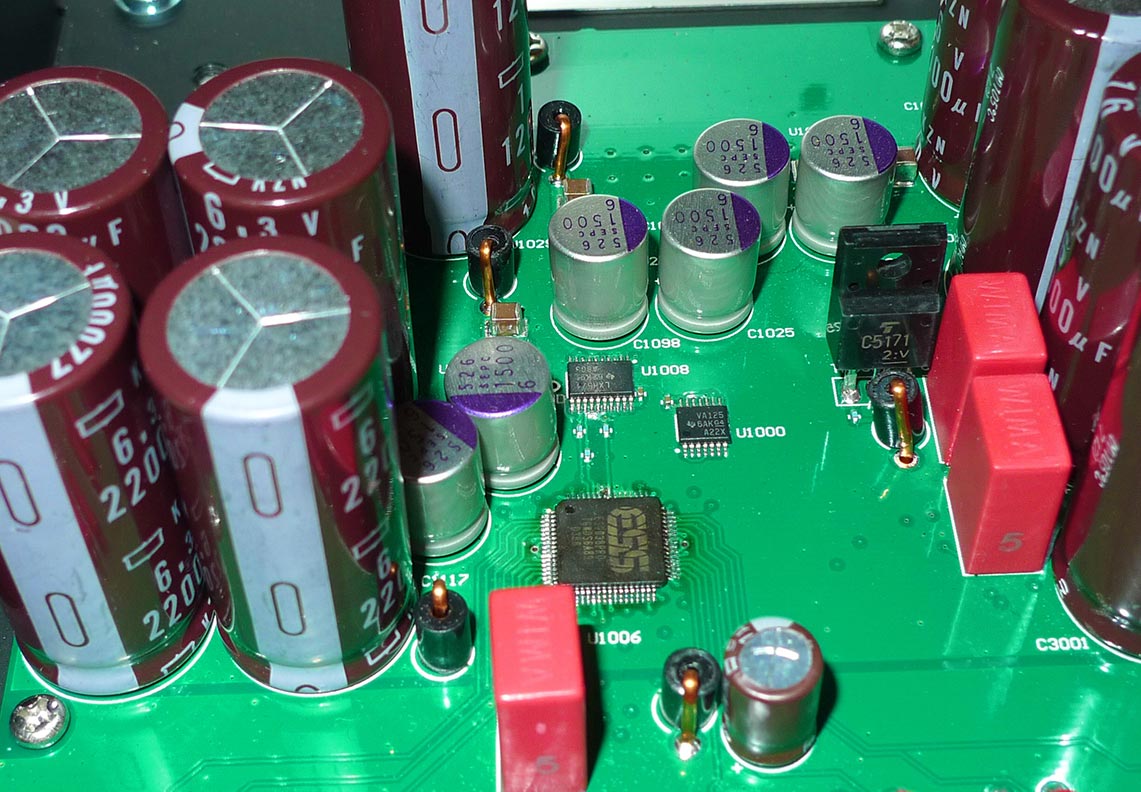Compatible NAS and network control
For high quality music playback and for ease of use, Sforzato recommends using specially created NAS (music library) such as Fidata, Melco, Taiko, Pachanko, etc. Any NAS server will also work with Sforzato if the software Twonky Media or MinimServer is installed on them.
Control of Sforzato players on a network is possible via smartphone or tablet with DLNA / OpenHome compatible controllers. For Android and iOS devices, they’re they’re Linn Kazoo, the Fidata Music App, and own TAKTINA App.
PMC Technology Master Clock Generator is the life of Digital Audio
All digital audio devices operate using a clock as a standard when they convert digital signal to an audio signal, so the quality of the clock greatly affects the quality of the sound.
Absolute precision is not what digital audio demands of the master clock. The highest precision tuning meter (Strobe Scope) used by musical instrument makers has accuracy on the order of 1/10 cent. One cent is 1/100 of a half tone. If you calculate the frequency, it is a precision of dozens of ppm. That level of precision can be easily obtained by any standard clock generator. The high fidelity generators used in normal high‐grade audio have 10 times that level of precision, and there is no significant benefit in demanding any more precision than that.
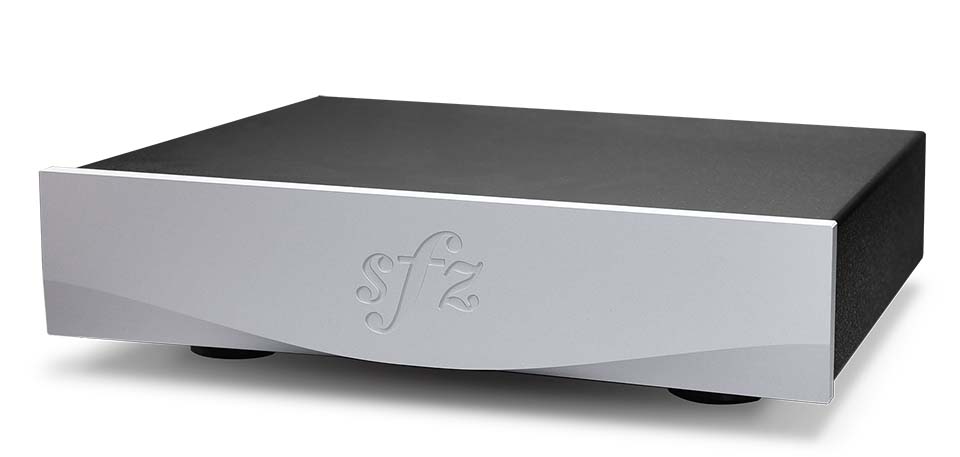
The clock performance needed by digital audio is phase noise (the frequency components outside of the generating frequency that shouldn’t be present, in other words, impurities), which affects jitter.
The clock, which controls all operations of digital audio, unable to correctly restore audio, if it is contaminated by noise. Usually, clock signals are supplied through the PLL circuits to the D/A converter. The PLL works as a filter, so any noise with a frequency that is significantly different from the generating frequency of the clock generator can be removed. However, noise with a frequency that is very close to the generating frequency (neighborhood phase noise) cannot be removed by the filter, so when it is converted by the D/A, it becomes jitter. To suppress neighborhood phase noise, you have no choice but to use a clock generator with little neighborhood phase noise.
SFORZATO’s master clock generator provides a pure clock with minuscule phase noise, dramatically improving all digital audio devices with 10MHz clock input.
Music playback via Ethernet (LAN) With custom−made Software
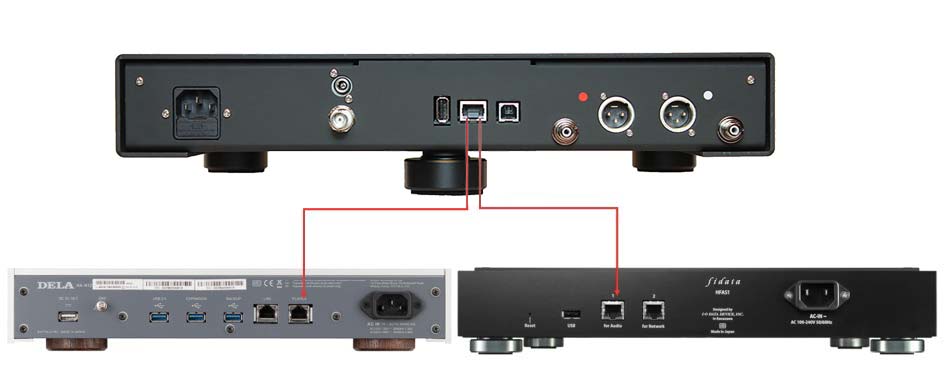
Our custom‐made software is designed to work flawlessly with our hardware. Well‐developed software is of great importance to ultimate audio quality and also for easy use of the equipment rendering undisturbed music enjoyment.
Advantage of Ethernet (LAN) connection in comparison to USB
Implementing a USB connection is much easier for audio manufacturers than Ethernet (LAN). Fortunately, the world offers a standard and inexpensive USB solution: USB interface hardware and driver software. Manufacturers only have to buy the solution.
Almost all processing such as FLAC unpacking, synchronization, filtration, etc. is done on PC or NAS, therefore the manufacturer simply buys that ready‐to‐go solution and puts it into their products, making some improvements. But for the same processes via Ethernet (LAN) there is no standard solution and for most manufacturers, it is very difficult to create their own high‐quality software.
Also, one of the main problems of the USB connection is that the negative (ground) contact is common for PC (NAS) and DAC. In this case, it is very difficult (almost impossible) to filter Ground noise. There is no such problem with the LAN connection.
In any case, a LAN connection is better for sound quality than USB.
Native DSD playback without DoP

Although DoP (DSD over PCM) is not a direct conversion of DSD to PCM, it requires much more bandwidth. This is because the DoP transfer adds to the bulk of the data transmission. Putting DSD64 or DSD128 into DoP practically doubles the size of the package being transmitted. The biggest difference is in overhead. With more typical DACs that do 32‐bit transfer half of the data transferred is redundant. So, it is mostly a matter of wasted bandwidth.
Technically, native DSD playback is not much more difficult than DoP. But as available solutions of third‐party manufacturers of software support only DoP, many manufacturers use this transfer. For a Hi‐Res DSD transmission, both high speed of data transmission and high speed of processing are necessary. Therefore, for many manufacturers, it is very difficult to make effective DSD processing.
For Sforzato, Native DSD playback up to DSD512 is not a problem, as it uses a special powerful Variscite CPU module DART-MX8M.
Support of NOS (non−oversampling) playback
Sforzato only takes a true Hi‐End approach, so it doesn’t use upsampling or any other signal processing! Recently, some advanced digital sources manufacturers have already understood the harm from upsampling and thus the term NOS (Non Over Sampling) has appeared.
In the NOS mode, digital‐to‐analog conversion of a PCM signal does not use a digital filter, which can be seen commonly in the modern DACs. In this case, no interpolation is applied, nothing is added to the original signal, and as a result, the sound remains more natural.
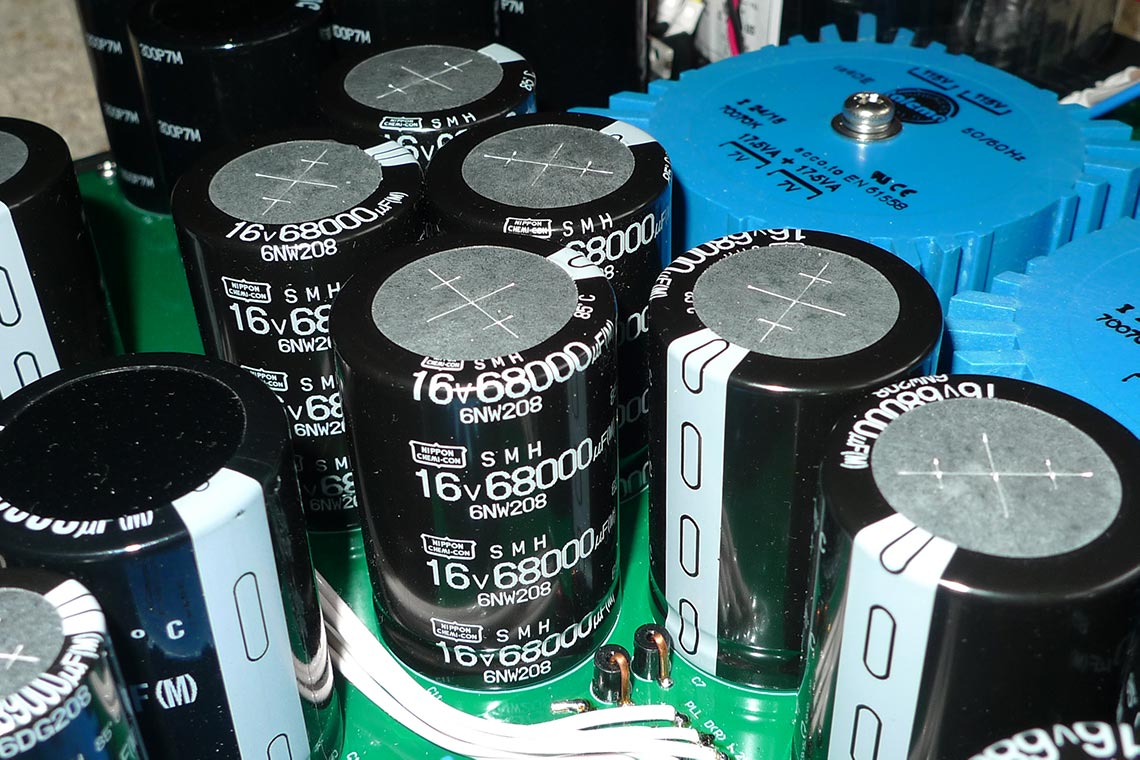
When the Upsampling mode is turned on and the associated software is running, there is often a feeling of the expanded soundstage, added air and richness to the sound. Perhaps it is just listening to the pre‐echo and post‐echo generated by the calculation. However, in the NOS mode, the sound acquires big naturalness, freshness, realism of vocals, and enhanced the presence effect.
Therefore, in total, the NOS mode gives a great improvement in sound quality.
DIRETTA Completely New Network Protocol Designed for Hi−End Audio
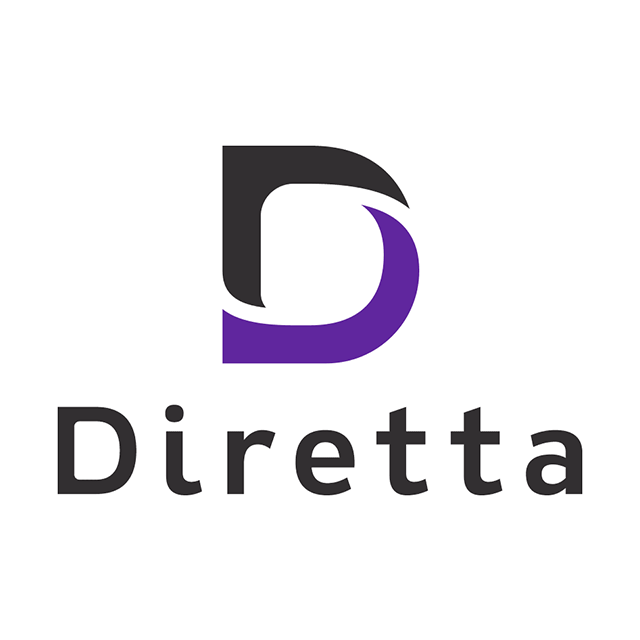
Diretta is a unique, different from the rest, protocol, which was originally developed by Japanese company MegaTech Electronics to improve sound quality for Hi‐End Audio equipment.
Diretta uses a software approach to reduce noise and inrush current during data transmission. When exchanging music data between a player and a server, the data processing is performed in such a way that the work of the CPU on the player side can be minimized and evened. This data is transmitted in short packages through regular and short periods that give significant improvement of sound quality.
Diretta is developed and tuned using Sforzato players and is virtually optimized for all Sforzato players. The network player SFORZATO, using the Diretta protocol, realizes the LAN DAC function, which allows playing music from a PC via Sforzato player over a network or even directly (bypassing a router).
Diretta gives a huge advantage in sound quality over standard transmission protocols, such as DLNA, and UPnP.
Designed according to the Top Hi−End concept
In addition to custom‐made software, the Sforzato company pays great attention to traditional for Hi‐End Audio points.
No−compromise DAC design
The latest ESS 9038 Pro is used for each D/A converter in monaural. The top models use two ESS chips per channel. Sforzato uses this DAC chip in a special way not available to most DAC manufacturers on this chip. Based on his firmware, Sforzato created an FPGA structure that controls the ESS chip in a special way, giving more better SQ.
To fully utilize the performance of the ESS 9038 Pro, Sforzato created his own large I–V conversion circuit based on SQ‐selected discrete elements, reproducing a vast sound field and a wide and detailed sound image. The high‐fidelity clock circuit and scrupulously arranged clock wiring and architecture ensure perfectly synchronized, jitter‐free audio. All these solutions and know‐how make a completely different SQ than other manufacturers using this chip.
Using an eight‐layer circuit board with a wide top/bottom grand plane allows the majority of digital signals to be arrayed within the mid‐layers. Heavy shielding reduces noise to the utmost. Non‐magnetic noise‐absorbing sheets and shield casing cover noise‐generating components like the CPU, which provides network connectivity, and the clock circuit area, achieving robust noise suppression.
Large capacity power supply

In all Network Players and Master Clock Generators Sforzato applies powerful and robust power supply with separate power lines to supply important digital and analog circuits.
In high‐level models of Network Players, the Power Supply has separate chassis and 7 transformers are built‐in: left and right independent analog circuit power supply, left and right independent D/A converter analog power supply, digital part power supply, CPU part power supply, and USB input power supply. Large capacity of over 450VA. Ultra‐high speed and low noise SiC Schottky diode is used for rectification.
Non‐feedback type discrete power supplies are arranged independently for the positive and negative power supplies for analog output. The optimal power source for each function is deployed at the optimal position.
To take advantage of the Master Clock, Sforzato has built a discrete high‐capacity linear power supply that uses a high‐capacity 160VA toroidal transformer, 330 000 uF capacitors, and high‐speed, low‐noise SiC Schottky diode.
Careful internal wiring and output terminals
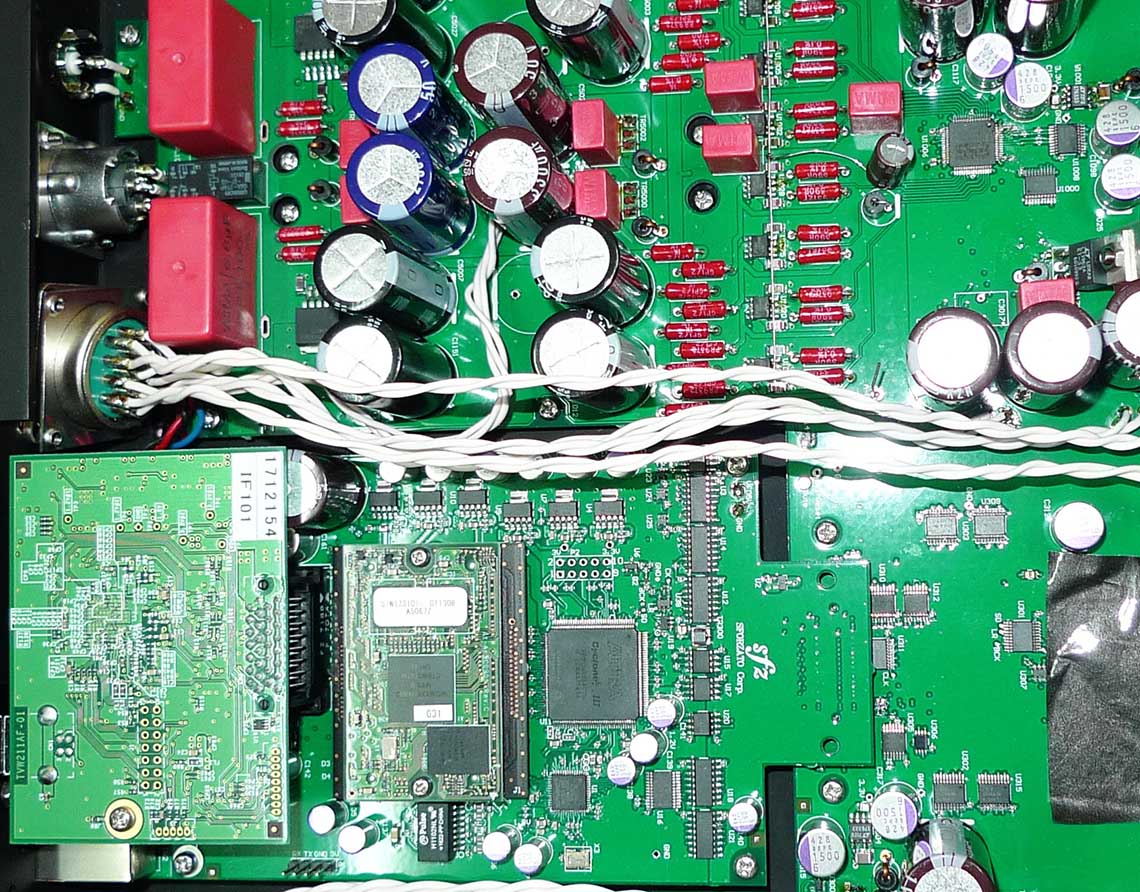
For the internal wiring, Sforzato uses an elliptic single core wire PC–triple C wire with the cooperation of Sekiguchi Machinery Sales Co., Ltd. (Acoustic Revive). This wire connects all power and signal output circuits.
All Sforzato Network Players have two outputs: balanced XLR and unbalanced RCA. Both use high‐grade terminals with rhodium plating.
Robust housing

For Sforzato Network Players both the main body and the power supply section are made of 3 mm thick aluminum, and a 15 mm thick front panel completely suppresses unnecessary vibration and external noise. The power supply section further strengthens the bottom plate with a non‐magnetic reinforced plate with a thickness of 3 mm. Together, with a powerful power supply, it contributes to rich music playback with a sense of speed and air.
The Master Clock Generators use the same robust housing but with additional vibration and noise control measures. The power transformer is shielded and OCXO Crystal is floated from chassis.



